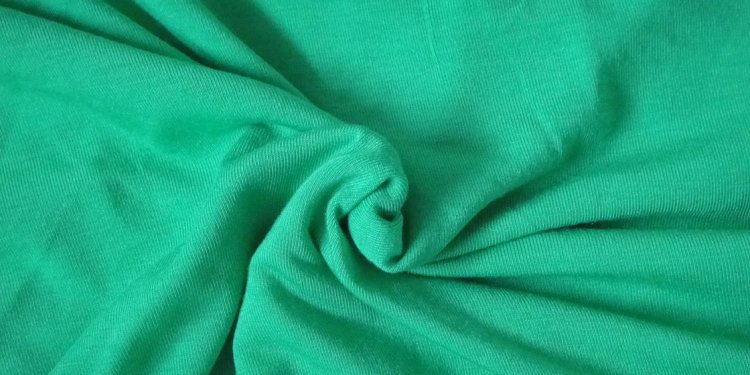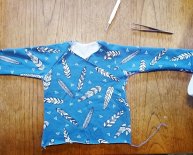
Pima cotton Jersey fabric
The name "Supima®" is a licensed trademark owned by Supima and its members. It is used to promote textile and apparel products made of American Pima cotton, and is strictly controlled by the grower organization. The name "Supima" is a portmanteau of Superior Pima.
What is Pima cotton?
Pima cotton is a generic name for extra-long staple (ELS) cotton grown in the U.S., Australia, Peru and in very limited production in a few other locations around the world. Pima is from the gossypium barbadense species, compared to gossypium hirsutum, to which upland cotton belongs. The primary differences between Pima (ELS growths) cotton and upland cotton are staple length, strength of the fiber and fineness of the fiber. In the U.S., cotton is considered to be ELS or American Pima if it is an inch and 3/8 or longer. Its strength and uniformity measurements are considerably higher than those of upland cotton.
What is the difference between Pima and Supima?
The name "Pima" is the generic term generally applied to ELS cotton grown in the U.S., Peru, Israel and Australia. The name was given to the ELS cotton being grown in the Southwest U.S. in about 1910. It had previously been called American-Egyptian cotton but was renamed to honor the Pima Indians who were growing the cotton for the USDA in Sacaton, Arizona, where the government's ELS breeding program was being conducted. "Supima" is the trademark name used to promote and market textile and apparel products made with American Pima cotton. Supima provides licensing agreements to textile mills, manufacturers and brands/retailers for the expressed purpose of promoting specific apparel and textile products in high-end retail outlets. Industry people often refer to American Pima cotton as "Supima cotton."
Does the use of the name Pima guarantee a product's cotton content?
Not necessarily. In the past, some textile products that were labeled or marketed as "Pima cotton" goods were not always made of all-Pima cotton.
The Supima® trademark is the consumer's only guarantee that a product is made of 100% American Pima cotton. The Federal Trade Commission ruled in June of 1997 that manufacturers and retailers would have to itemize cotton source content on any apparel or textile product when the name of a premium fiber was being used. For example, a product made of 60% American Pima cotton and 40% upland cotton could be labeled and marketed as 100% cotton. But if the retailer or manufacturer wants to mention the Supima name in the labeling or marketing, they would have to list the content of both the Supima and the upland cotton. The content should be listed based on weight percentage.
What's the difference between Supima and Egyptian cotton?
All cotton grown in Egypt is "Egyptian" but it is not all ELS cotton. Egypt is one of the largest producers of ELS cotton in the world, but it consumes much of what it produces. The majority of what it exports is long staple cotton, not ELS cotton. However, the description "Egyptian cotton" conjures in the mind of many consumers the image of the very finest and longest cottons in the world. Egypt does produce and sell some of the best ELS cotton in the world, but it amounts to only about 7% of annual global ELS/LS cotton exports, and is approximately 25% of Egyptian cotton exports. Supima cotton has become the cotton of choice among the world's fine-count yarn spinners.
Why is Supima a premium cotton?
Supima accounts for only about three percent of annual cotton production in the United States. Its fineness and longer staple length makes Supima a premium cotton fiber. It is used to spin finer count yarns, which can be knitted or woven into softer, finer and more luxurious fabrics. It is grown in select areas of the far west and southwest U.S. where the cotton can benefit from a long growing season in a hot, dry climate. Supima cotton is grown exclusively on furrowed rows where growers can closely regulate irrigation and other inputs. Its production costs can vary in different states and regions, but it generally runs a little more expensive as upland cotton costs in the same area due to extra management of the crop. Ginning is more expensive because Pima cotton is roller-ginned, not saw-ginned like upland cotton. Supima is grown in Arizona, California, New Mexico and Texas.
How do Supima® products benefit the consumer?
Products made from 100% American Pima - Supima cotton will have superior strength to a product made of upland cotton or upland/Pima blended cottons, which will improve the durability and increase the lifespan of the textile and apparel products. Because of the fineness of Supima cotton, more fibers can be spun into a yarn of a given count, which will enhance the feel and softness, drapeability and brilliance of color of a fabric.
Is Pima cotton a new breed of cotton?
No. Pima cotton traces its ancestry to the famous Sea Island cottons that were produced in the southeast United States in the 1700's. That cotton was then bred with Egyptian cottons to produce the contemporary ELS cottons that have evolved in the U.S. since the turn of the 20th century. The USDA's Pima Improvement Project has been responsible for the significant advances in Pima development over the last 50 years that have produced varieties S-5, S-6 and S-7. Each bore substantial improvement over its predecessor in yield potential and fiber characteristics. Commercial varieties with fiber properties similar to S-7 have since been released and improved upon.
Is Supima cotton only sold in the United States?
No. More than 90% of annual U.S. Pima consumption is offshore. Most of the consumption today is seen in China and South Asia (Pakistan and India). Although Japan and Indonesia continue to be strong importers of Supima® cotton, other nations such as Taiwan and Peru have also risen to the top in terms of Supima cotton imports. These nation's purchases account for over 80% of all the U.S. Pima cotton exports.
Why doesn't the U.S. textile industry consume more Supima cotton?
Domestic textile mills are predominantly medium to coarse count yarn producers. However, the U.S. does consume approximately 30, 000 bales of U.S. Pima cotton a year. This figure has fallen from a high of about 120, 000 bales of annual consumption several years ago. The decrease in annual domestic consumption speaks to the increasing cost of production in the U.S. In 1998/99 the U.S. was the largest consumer of Supima cotton. However, as more of the brands/retailers in the U.S. outsource their supply, foreign nations have jumped to the top of the list of Supima consumers.
Where can I find Supima-branded textile and apparel products?
Supima can be found at finer department and specialty stores nationwide. Retailers carrying Supima product include Bloomingdale's, Nordstrom, Brooks Brothers, Lord & Taylor, Bed Bath and Beyond and Costco. Supima product can also be found in direct mail-order catalogs from Lands' End, Linensource and L.L. Bean. Examples of brands carrying Supima trademarked-products include Ralph Lauren (towels), WestPoint Home (towels and sheets), Springs Wamsutta (sheets), Brooks Brothers (men's dress shirts), James Perse (casual knits) and Michael Stars (women's knits). The Supima® trademark is your guarantee that the product contains Supima, the world's finest cotton. No other trademark can guarantee a product's luxury cotton content.

















